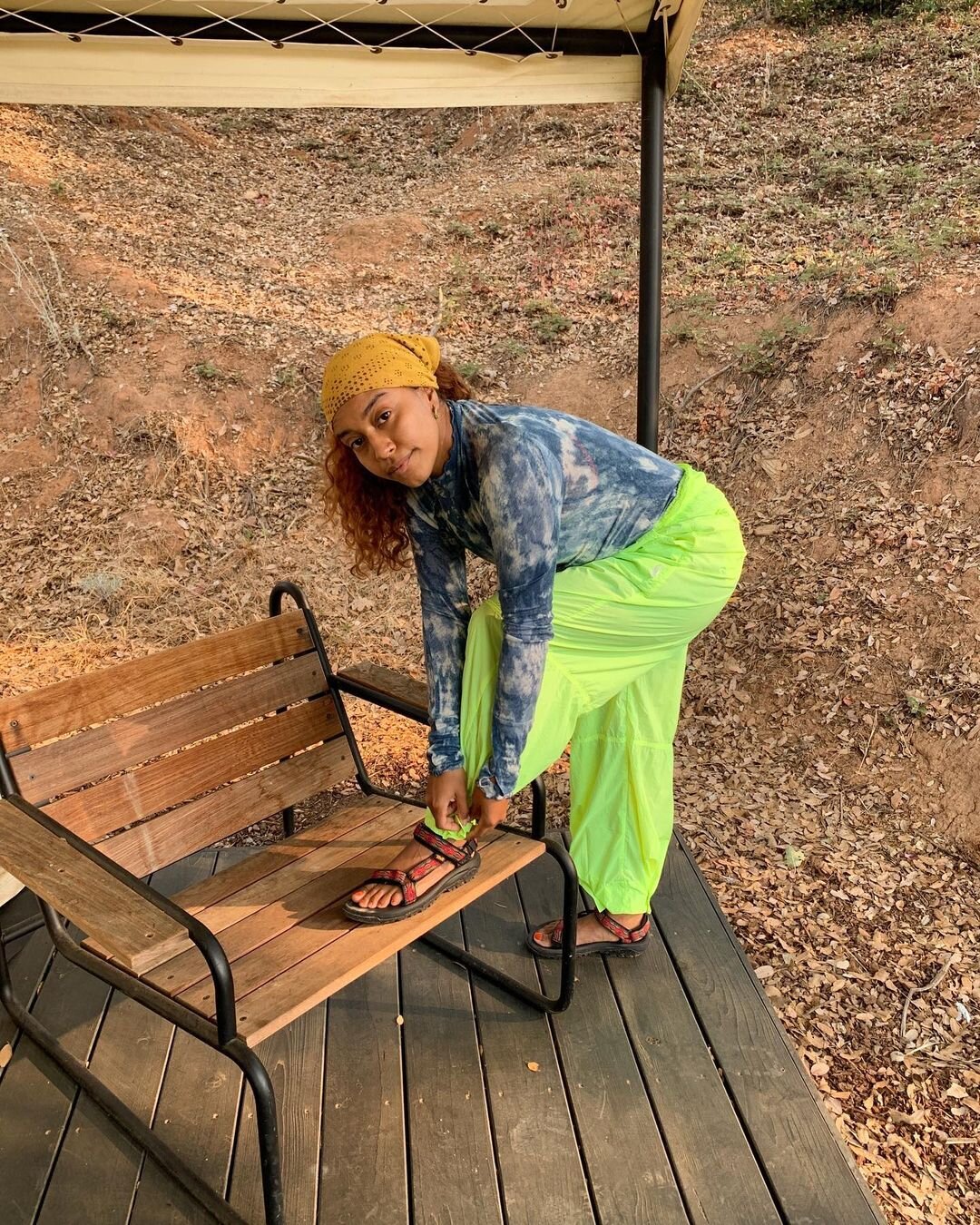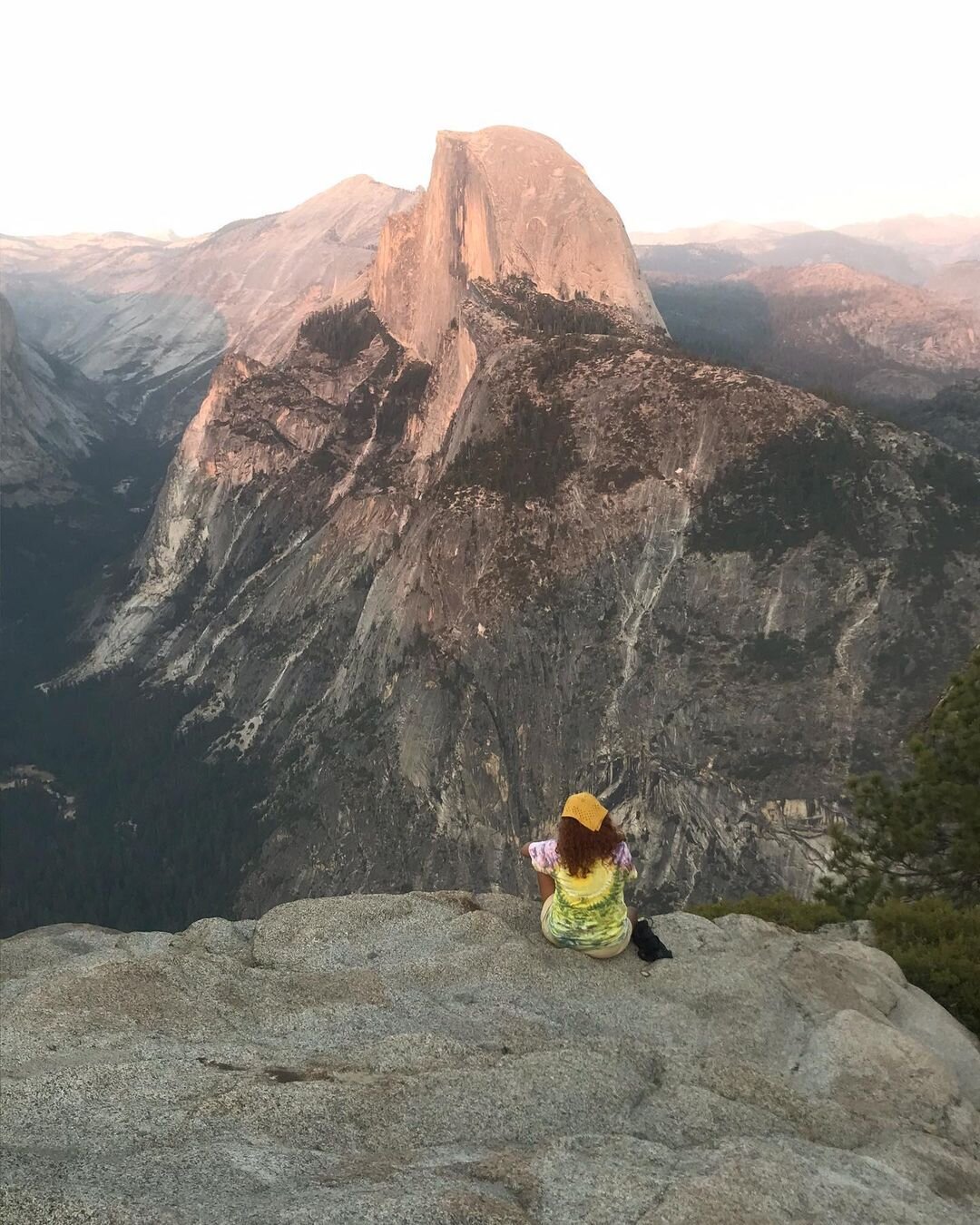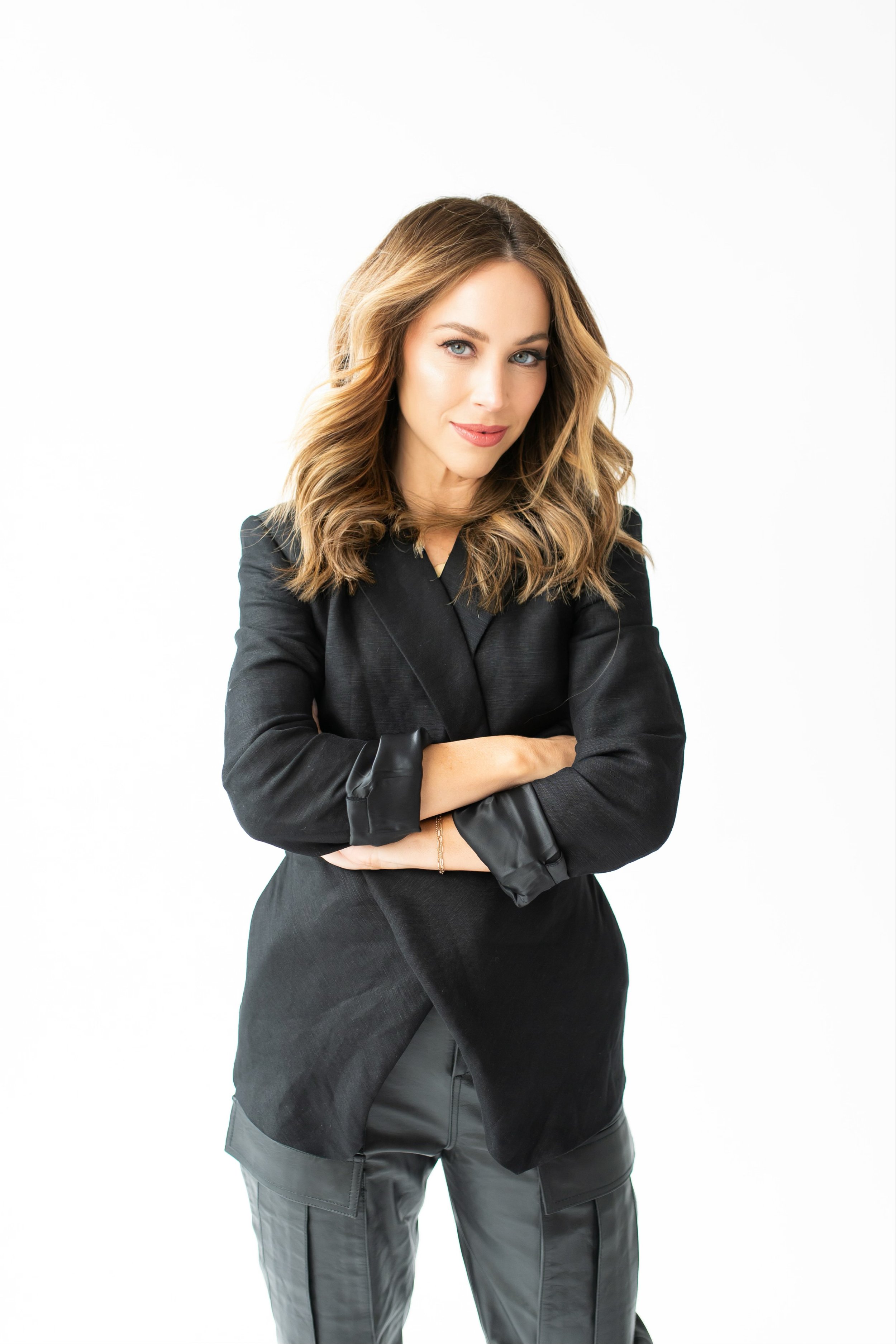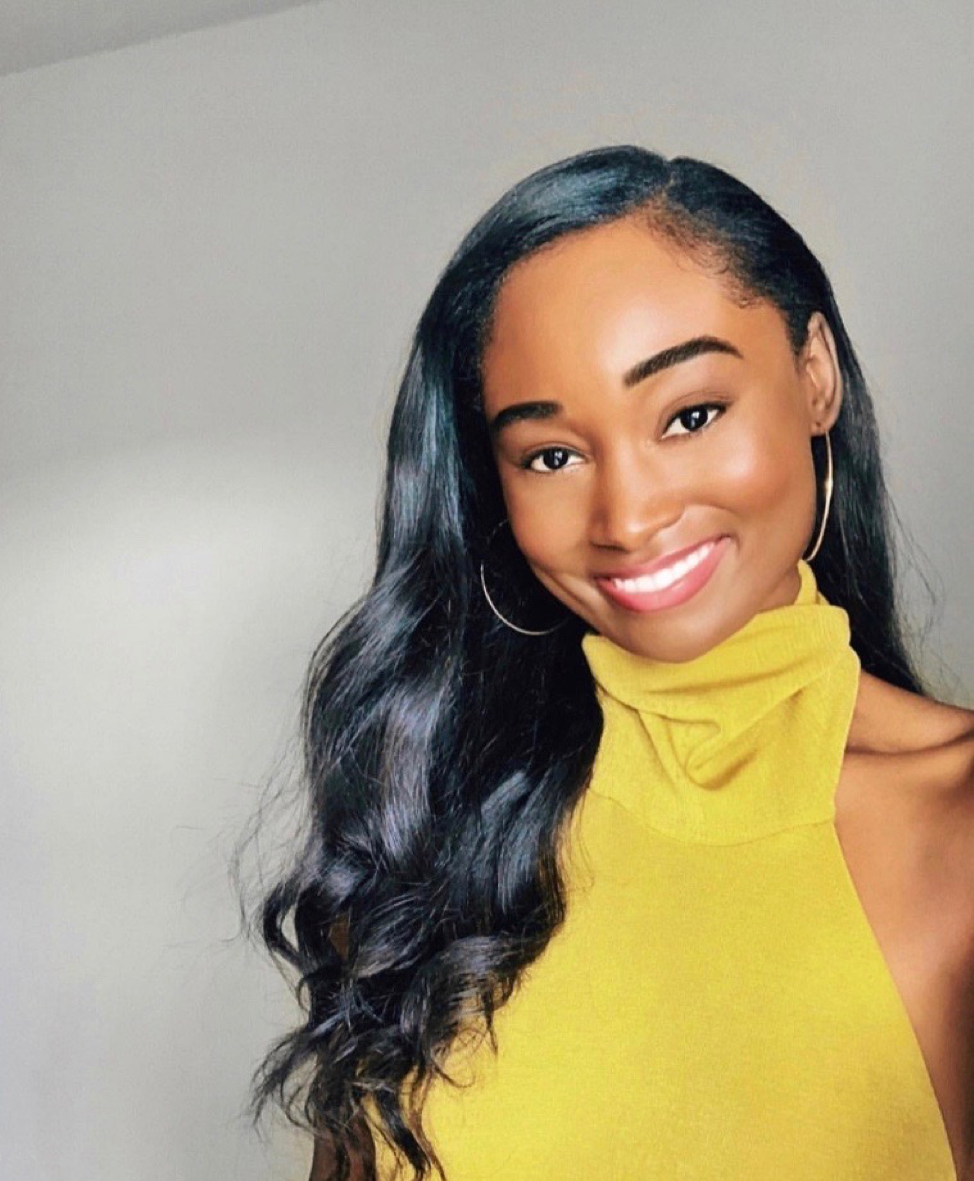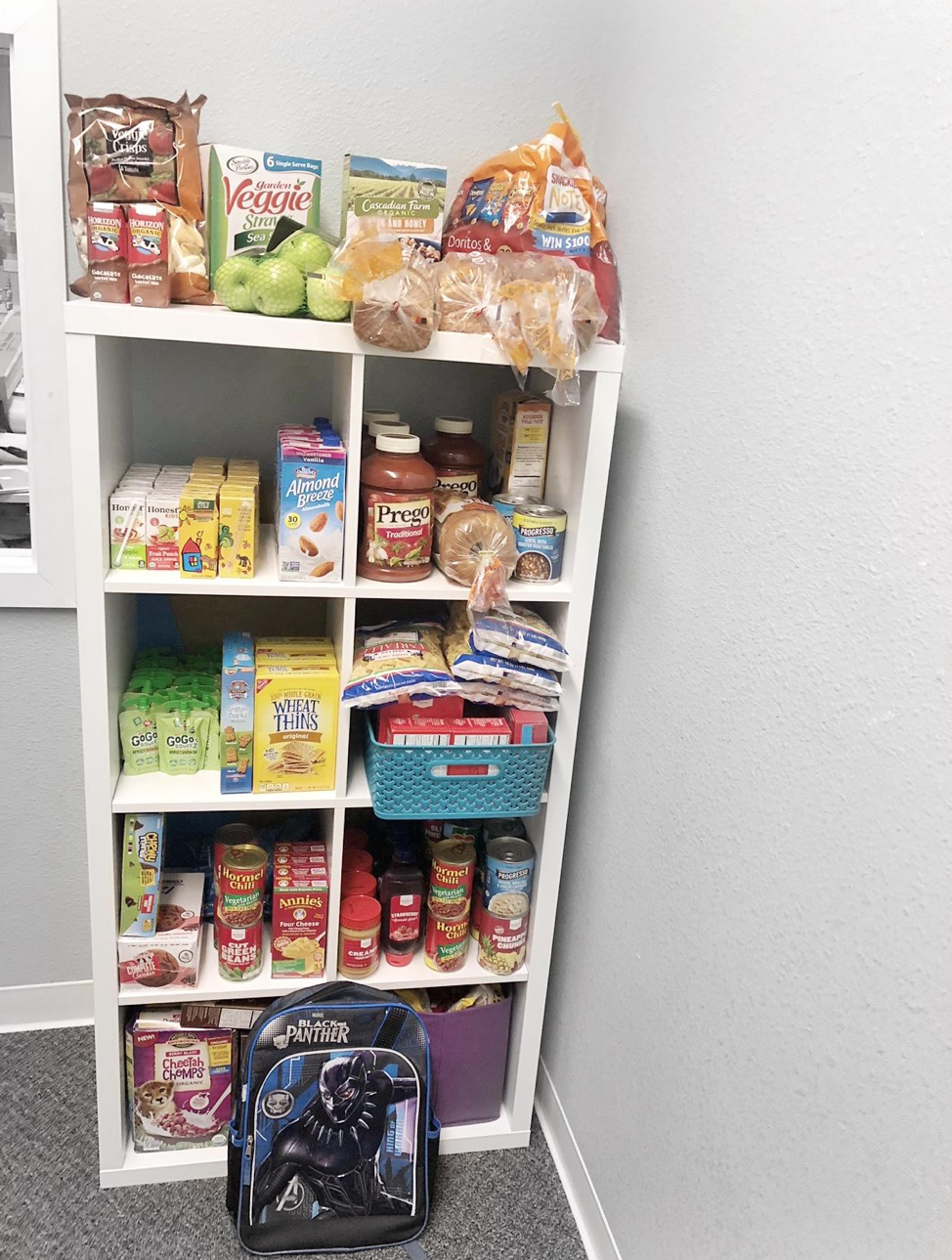How the Founder of Hike Clerb Is Reclaiming Space for WOC in the Outdoors, One Trail at a Time
"Everything we strive to do is for our community."
We know how daunting it can be to start a new business, especially if you’re disrupting an industry or creating an entirely new one. When there is no path to follow, the biggest question is, where do I start? There is so much to do, but before you get ahead of yourself, let’s start at the beginning. To kick-start the process, and ease some of those first-time founder nerves, we’re asking successful entrepreneurs to share their stories in our new series, From Scratch. But this isn’t your typical day in the life profile. We’re getting into the nitty-gritty details—from writing a business plan (or not) to sourcing manufacturers and how much they pay themselves—we’re not holding back.
Photo: Courtesy of Evelynn Escobar
Whether she was hitting her local trails or road tripping through a national park, Evelynn Escobar couldn’t help but notice how homogeneous the outdoors were—and she decided to do something about it. In 2017, she started Hike Clerb, an intersectional women’s hiking group, to reclaim space for women of color in the outdoors. By sharing photos of the group’s excursions on Instagram, it didn’t take long for Escobar to cultivate a diverse and inclusive community of women who also wanted to see themselves represented on the trails—and in other outdoor spaces like beaches, parks, and pools.
Once Hike Clerb reached over 20,000 followers on Instagram, it was clear Escobar had a movement on her hands. And, although the club has always been dedicated to serving the community, last year, she officially registered Hike Clerb as a 501c(3) nonprofit organization. “Everything we strive to do is for our community,” she tells Create & Cultivate about the decision. “Not to turn big profits. Not to make an organization that must run the capitalistic rat race. Something for us, by us.” And her mission has attracted the attention of publications by the likes of Teen Vogue and Condé Nast Traveler, as well as major brands such as Nike and Free People Movement.
Ahead, Escobar shares how she’s paying it forward to her community, partnering with brands to do good, and leveraging social media to start a movement.
Can you tell us a bit about your career background and what you were doing professionally before launching Hike Clerb?
Before I launched Hike Clerb, I worked in the fashion and beauty industries as a social media marketer.
What was your “lightbulb moment” for Hike Clerb and what inspired you to pursue this path?
My experience as an outdoorsy Black Latina inspired me to create Hike Clerb. Whether it was hiking alone or realizing just how homogenous the outdoors were on road trips, I wanted to create a solution to the issues I noticed out there.
How did you come up with the name Hike Clerb? What are some of the things you considered during the naming process?
To be honest, it was something that came very intuitively without much mental exertion. Clerb is just a funny word that I and many friends use when talking about clubs of all types, so it was just a natural fit to go with something that felt familiar and lighthearted.
Last year, Hike Clerb registered as a 501c(3) nonprofit organization. Can you tell us about that process and why you decided to take this route?
It was actually a decision that I sat with a bit. For us, it was between creating a social enterprise or a nonprofit. Ultimately, the nonprofit won because everything we strive to do is for our community. Not to turn big profits. Not to make an organization that must run the capitalistic rat race. Something for us, by us.
Photo: Courtesy of Hike Clerb
What were the immediate things you had to take care of to set up the organization?
When I started the organization, a little over three years ago now, the only place we existed was Instagram. I’d post all of our events, recaps, etc. there. Later I created our site and secured our handle on other channels. We are currently in the legal process of securing our trademarks etc.
What research did you do for the organization beforehand? Why would you recommend that due diligence to other nonprofit founders?
Before embarking on our 501c(3) journey, I took a look at the way other nonprofits in the industry were set up from a financial perspective just to give us a sense of direction. Things like, what type of donation platforms are commonly used? What types of programs and grants exist that we could apply for? Etc.
Did you write a business plan? If so, was it helpful? If not, what did you use to guide your organization instead and why did you take that approach?
Yes and no. Yes because I do have a business plan in a very nontraditional sense, and no because the bulk of this has been learning as I go. I have a sense of direction and bigger goals, dreams, collaborations, etc. that we are actively pursuing, but at the end of the day, where our strength lies is that we are very much intuitively led and it has allowed us to transcend and innovate in the space like no other.
How did you fund Hike Clerb? What were the challenges and what would you change? Would you recommend that route to other founders?
It has been a mix of self-funding and donations from our community. Now we are receiving bigger corporate donations from time to time for collaborations etc. I think it can be hard at first for people to want to invest and buy-in when you’re just getting the funds to get off the ground. Nonprofits don’t magically churn out content, events, etc. out of thin air. There is always a team behind the scenes that needs to be compensated for their labor and creativity that brings the vision to life and a lot of people forget that. The operational costs have to be covered before you can move on to plan b and c, but most people want to invest in the shiny event or program, etc., not the non-sexy organization costs of what’s needed to even be able to run.
Do you pay yourself, and if so, how did you know what to pay yourself?
I do not pay myself from any of the funds we have raised for the organization and it is a very intentional effort to not do so. I value my team and the initiatives and programs that we are trying to get off the ground. As long as I’m able to sustain them, I’m happy to finance myself through my own platform, etc. It was really a no-brainer for me to proceed this way.
How big is your team now, and what has the hiring process been like?
We are a team of three! Me, as the founder and executive director, Jennifer Martinez as our director of operations who also assists with collaborations and partnerships, and Stephanie Sleiman who is our art director and designer at large. At first, accepting help was difficult for me because I didn’t really know where to start. I had been running things by myself for the first two and a half years before they came on. Both Jen and Stephanie were Hike Clerb members who volunteered their skills and time in any way that I needed and that’s how it all started. There was no formal call to hire. Now that we have a small but mighty team, we are looking to bring on a few more members to really help make our bigger plans come to life.
Did you hire an accountant? Who helped you with the financial decisions and setup?
We do have an accountant who was already someone I had a relationship with because of my personal finances. They didn’t come along until after the 501c(3) status was solidified.
What has been the biggest learning curve during the process of establishing Hike Clerb and running a 501c(3) nonprofit organization?
The biggest learning curve has been finding the resources needed to really legitimize everything. When it comes to legal and financial recommendations, they can be hard to come by. These things aren’t widely spoken about, but they should be! Just getting everything needed to run smoothly has been a process!
You’ve been featured in Teen Vogue, Condé Nast Traveler, Women’s Health, and many other notable publications. How did you promote Hike Clerb in the beginning? How did you get people to know who you are and create buzz?
Our main source of news, promotion, etc. was our Instagram! We created content from all of our hikes to promote what we were doing, who our members were, etc., and it organically grew from there.
Photo: Courtesy of Hike Clerb
Hike Clerb has also partnered with major brands by the likes of Nike and Free People Movement. How do you choose which companies to work with and how have they helped you grow and spread Hike Clerb’s mission?
We are very intentional about the brands that we choose to partner with. They not only must align with our mission and vision but play a role in helping our community in a tangible way. Whether that’s making a donation, donating items to help BIWOC get outdoors, or all of the above! They’ve helped us introduce our work to new sets of eyes which has only strengthened our platform.
Do you have a business coach or mentor? If so, how has this person helped, and would you recommend one to a fellow founder?
I do have many mentors, but not a dedicated business coach per se. I am thankful to all the women of color who have invested their time and efforts in helping me along my business journey. I would absolutely recommend that everyone have at least a mentor or someone in their corner they can turn to about these things.
What is your number one piece of advice for any new founder in the nonprofit (and/or for-profit) space and why?
Be married to your mission. If your mission is not a natural extension of you—something that comes so naturally to you that you can talk about it in your sleep—then sit on your idea until it becomes that. You should be so clear on why you’re doing what you’re doing that there is no question in anyone’s mind of why what you’ve created exists. When you create out of an authentic place, you’re setting yourself up for ultimate success.
What’s next for you and for Hike Clerb? What are your plans for 2021 and beyond?
World domination! But really, bigger in-person events, more programs, a new way to consume our editorial content, ways to participate across the country, and, for me, a new little addition to my growing team and family.
Photo: Courtesy of Hike Clerb
MORE ON THE BLOG
How This Med School Student Is Helping End Childhood Hunger
“Trust your vision and don’t let fear deter you from making an impact.”
Shanay Thompson does it all: medical student, NBC contributor, former model. But she didn’t stop there. In 2017, upon realizing the prevalence of food insecurity among at-risk youth she mentored, Shanay founded Every Kid Fed, a nonprofit organization that focuses on ending childhood hunger.
Below, Shanay shares how she manages her time, what advice she has for women of color looking to start their own nonprofit, and what she wishes people knew about food insecurity.
You were a Wilhelmina model before you quit to pursue medicine. When did you realize you wanted to change careers, and how did you go about making that career shift?
When I started modeling, my intent was to do shoots here and there for fun while I was in school, until one day I started getting booked for shoots and shows that I didn’t want to pass up. Throughout college and graduate school, I would be on the plane or backstage in hair and makeup at New York Fashion Week, doing coursework, and when I got into medical school, I knew I had to make some serious adjustments. After having modeled for spectacular designers, fashion magazines, and doing pageants in between - as thrilling as it was, I wanted to do more in terms of impactful work. I knew I wanted to empower women on a larger platform and put my education to good use, so I met with my agent in 2015, and terminated my contract amicably. Modeling will always have a special place in my heart, as it was such a integral part of my life for years. I still keep in touch with friends in the modeling industry and attend shows, so I’d say it’s certainly a win-win!
How did you first come up with the idea for Every Kid Fed? How did you transform that idea into a reality?
I mentored at-risk teen girls in Berkeley, CA, where I held after-school workshops and field trips that focused on self-esteem, empowerment, and academics. I started noticing after a few years there was a substantial increase in my mentees asking to take some of the snacks I provided during our workshops home for them and their siblings, and if they could borrow money for lunch. That’s when I started asking questions. I asked counselors and teachers if they had encountered students asking them for food and they said all of the time. I even asked an elementary school cafeteria manager, and she said on multiple occasions her kindergarten students asked her for seconds and thirds during lunch because they don’t eat enough at home. Hearing that made me spring into action. Not only is the public school lunch system flawed, there’s the severe affordable housing crisis in the Bay Area, along with gentrification. Families, who have worked hard to build a comfortable life for their families in cities like Berkeley, Oakland, San Jose, etc. are now struggling financially and are at risk of being displaced or already have been. But there’s more:
Parents who struggle to make ends meet but still make slightly over the amount required to qualify for free/reduced lunch program have children who are food insecure. Those children often resort to stealing food.
Students who do qualify for the free/reduced lunch program, often get bullied, and are labeled as poor in front of their peers, so they skip eating altogether.
Students who utilize the free/reduced school lunch program still go hungry, as the meals aren’t enough to sustain them throughout the day.
With that information, I created Every Kid Fed. Each food pantry location is on campus in a discreet location for students in need. The school pantries complement the free school breakfast and lunch programs by providing access to food for all food insecure children during and after the school day has ended, on the weekends and during holiday and summer breaks. The pantries are stocked with non-perishable food and vegan/vegetarian-friendly options. I started off by using some of my funds to stock the pantries, and now we have secured partnerships with local businesses and companies to keep the pantries stocked. We now have fed over 9,000 students in need, since launching in July 2017.
““Trust your vision and don’t let fear deter you from making an impact.””
You’re in your last semester of medical school, and you were recently made a medical contributor at NBC. How do you manage your time with all of your different responsibilities?
It is truly such an exciting time for me, and life is certainly busy! I feel like I do a great job with keeping a great work/life balance and the key is organization and simplicity. Each week I make a small list of my goals in my agenda, and I keep a set schedule in the Awesome Note app of everything from my clinic schedule, business travel, meetings, events, yoga and pampering time, and more. I highly recommend that app.
What does a typical day look like for you?
6am: Yoga or pilates and while getting ready, I’ll have Project Juice delivered for breakfast and check the stock market since I have shares in few companies. I then check my schedule for the day, emails, and check in with my executive assistant Elaine regarding Every Kid Fed, then head to the hospital.
8:30am-Noon: Morning Clinic
Noon to 1:30: Lunch - I spend that time studying, replying to emails, sometimes squeeze a meeting in, or do the online food shopping for my pantry locations.
1:30-5:00: Afternoon Clinic
6:30ish: Cooking a vegetarian dinner while listening to podcasts, or going out to dinner with my love.
9pm: Catching up on health news and working on my next assignment for NBC.
10:30-11pm Bedtime!
What do you wish more people knew about child food insecurity?
The facts. Whenever I explain Every Kid Fed, I always give statistics. Currently, 1 in 4 children in California are food insecure, and 7.9 million Californians are living in poverty. Second, is the devastating ramifications that go beyond a growling stomach - hunger impedes on the ability to learn and achieve optimal physical and mental health. Low-income children are the most vulnerable especially in schools. Many of them suffer in silence, so it’s our duty to be an advocate and to make sure no child ever has to worry about where their next meal will come from, and to give parents who are struggling to feed their family a helping hand.
What advice do you have for women of color looking to start their own nonprofit?
Don’t be afraid to ask for help. As black women, we have been conditioned to jump higher, run faster, be stronger, independent and yes, we are strong, independent warriors full of black girl magic - but it is absolutely OK to ask for help. You can be great, but behind every successful person or business, there is help. I had trouble with this in the beginning, but when you decide to start a nonprofit or anything for that matter, it is 100% a collaborative effort.
How do you go about creating change in a community?
Know what you want to accomplish and be passionate about what you do. Creating change doesn’t happen overnight, so you have to be prepared for the long haul. Your conviction to the end goal is what allows it to come into being.
What’s the best piece of advice you’ve ever been given?
Trust your vision and don’t let fear deter you from making an impact.
What and/or who inspires you?
Meeting new people inspires me everyday. As a student doctor, medical journalist, and social entrepreneur, I’m constantly meeting new people and listening to their stories. It truly keeps me motivated to do everything I can to cultivate positive change and inspire the next generation.
What’s the next step for you and Every Kid Fed?
We have now transitioned into serving high poverty elementary schools exclusively, and are continuing our work to end childhood hunger by partnering with city councilmembers and the CA Department of Education to implement universal school lunch in all California schools. This will erase the stigma, peer shaming, and increase free school lunch participation. We are also launching our $10 or less meal recipe division on our website in April for parents. As for myself, I’m preparing for the launch of my new book, She Can, releasing on June 18th, graduating from medical school, starting residency, working on more exciting projects and gearing up for a much-needed vacation to Italy! If you’d like to help Every Kid Fed in any capacity, please visit everykidfed.org.
MORE ON THE BLOG
Five Ways to Make Your Nonprofit Brand Stand Out
How can you break through the clutter and away from the “me-too” marketing?
by: Julie Cottineau
The world of non-profit marketing has become much more challenging than it ever was. No longer is competition coming from other established non-profit organizations; now, it’s also from individual fundraising resources like Gofundme.com pages and requests on Facebook from friends for support in cause-related marathons, walkathons, etc. In some ways, social media has made it easier for your organization to connect with potential supporters; yet, on the other hand, it’s amplified the noise in the category, making it harder to get noticed and connect.
How can you break through the clutter and away from the “me-too” marketing to get the vital resources your cause needs and deserves?
It starts with better branding. And by brand, I don’t mean a more colorful logo or a catchy slogan. I mean the fundamental story your organization is telling – who you serve, what your promise is, and how you’re different — what I like to call your TWIST.
Here are a few tips you can implement right away for stronger non-profit branding.
1. YOUR BRAND IS THE EXPERIENCE YOU CREATE
Branding has become a buzzword and one of the most overused and least understood terms in marketing lexicon. Many people tend to limit the definition of brand to the logo, name, and website. These are important elements, but the real value of a brand is the experience you create. How you make people feel. It’s this relationship that creates long-term brand ambassadors as they rave about you to friends and family, and even strangers, on social media. How can you provide a better experience to your community? Not just an easier way to donate, but in all aspects of the brand journey. When I was VP of Brand for Virgin, we didn’t just think about the time in the air as the Virgin airline journey. We thought about the whole continuum. From when someone was considering a trip, all the way to when they got home and were telling their friends about the wonderful experience. Where does your brand journey begin and end? And how can you keep your organization top of mind and engage your stakeholders in between core events? Let your brand ambassadors be part of your ongoing story.
"Branding has become a buzzword and one of the most overused and least understood terms in marketing lexicon."
Tweet this.
This could mean providing regular opportunities on social media for them to share their own experiences related to your cause. It could also mean inviting some of your more loyal members in to create the next chapter of your story. What do they hope for the future? What do they love about your brand experience, and what do they wish could be different or better?
2. BRAND BLINDERS GET IN THE WAY. TAKE THEM OFF!
If you printed out the websites of your organization and other non-profits in your sector and covered up the names and logos, could you tell who was who? The answer is probably not. That’s because many non-profits spend too much time trying to look “legitimate” that they end up using the same words and imagery as everyone else. The problem with this is your important message won’t cut through. Take off those blinders and question the “givens” in your category. Look for outside expertise and new perspectives whenever possible.
3. LOOK BEYOND YOUR CATEGORY AND TWIST FOR INSPIRATION
How do you create a brand that has tangible value, is authentic, and stands out? How do you TWIST? It starts with looking at your story from new angles. Cast aside the do’s and don’ts, colors and imagery and so-called best practices of other non-profits in and out of your sector; find fresh ideas by using an out-of-category perspective.
Think of brands that you love in all areas of your life and learn how to use these brands to inform and influence your own branding strategy and execution. Get inspired by a brand like Apple with its empowering Genius Bar, or Starbucks with its focus on customization, or Amazon, who helps customers with suggestions for additional products. How can your non-profit take these lessons and TWIST them for a stronger, more distinctive brand experience? For example, think about the fun moment when you open a Snapple and look under the cap. What kind of inspiring and unexpected message could you include in the flap of your fund-raising mailers that could create a moment of surprise, delight and connection?
4. USE YOUR BRAND AS A DECISION MAKING FILTER
I’ve worked with several large non-profits and one thing I’ve noticed is that many organizations, in an effort to please everyone, take on too many initiatives. Their websites become overwhelming with a hodge-podge of programs and messages and it's difficult to determine what they really stand for. Brand building is not easy. Many organizations have great ideas, but what will make you successful is your ability to bring your idea to life, into the communities you wish to serve. Identifying your brand TWIST can help you say yes to the right opportunities and stay focussed. But just as important, it can also help you say no when necessary to ideas that distract from your core resources and cloud your message.
5. MAKE SURE THE ORGANIZATION "WALKS THE TALK" OF THE BRAND
A clear brand TWIST is also critical for internal alignment and guiding behaviors. Writing and sharing your TWIST within your organization helps ensure everyone from the Executive Director to the part-time helper is presenting a unified vision of the brand. Your employees and volunteers should be able to answer the question, “What does your organization do?” highlighting your unique TWIST. Make the brand story part of the on-boarding of everyone who is a key resource for the organization, including staff, volunteers, and key partners.
"Make the brand story part of the on-boarding of everyone who is a key resource for the organization."
Tweet this.
One of my Brand School graduates makes brand a part of their weekly staff meetings. He repeats the core brand promise and values and leads an interactive discussion on how each individual is living the brand promise in their specific role and what kind of actions they should stop or start doing to make sure their actions, and not just their words, are bringing this promise to life. Your brand promise is not something that should be sitting on a plaque in a conference room. It should be felt in every interaction and every brand touch point.
A strong brand can be a non-profit’s secret weapon. It can help you make the most of limited resources and share your story more effectively with those who can help make your mission a reality.
Julie Cottineau is the bestselling author of Twist: How Fresh Perspectives Build Breakthrough Brands, founder and CEO of BrandTwist, and creator of Brand School Online, an actionable branding class for entrepreneurs, small businesses and non-profits. She is the former Vice President of brand for Richard Branson’s Virgin Group and served in executive positions at Interbrand and Grey Global. She has taught integrated marketing communications at Columbia and Cornell universities, and is a frequent commentator on brand strategy and innovation in top business media.
More from our blog:





